- Like
- SHARE
- Digg
- Del
- Tumblr
- VKontakte
- Flattr
- Buffer
- Love This
- Save
- Odnoklassniki
- Meneame
- Blogger
- Amazon
- Yahoo Mail
- Gmail
- AOL
- Newsvine
- HackerNews
- Evernote
- MySpace
- Mail.ru
- Viadeo
- Line
- Comments
- Yummly
- SMS
- Viber
- Telegram
- JOIN
- Skype
- Facebook Messenger
- Kakao
- LiveJournal
- Yammer
- Edgar
- Fintel
- Mix
- Instapaper
- Copy Link
 Regional Training
Regional Training
The nuts and bolts of what you need to know…
- One of the most effective ways to increase the volume a specific muscle is subjected to is to attack it with a “regional” approach
- A “regional” approach consists of modifying the way in which you perform the same exercises you’re already performing, in a way that increases the demand of the muscle needing it the most
How to incorporate more volume for a weak body part WITHOUT overworking your body’s capacity to recover
In regards to situational training, one of the more effective ways to go about increasing the volume for a weaker/underdeveloped muscle in relation to the rest of your physique, is to attack the situation with a “regional” approach.
What do I mean by “regional” approach?
A regional approach is one that includes modifications to as many exercises throughout your current routine, to allow for a greater amount of work to be done by the area that needs it the most by directing a slightly greater amount of tension onto that area. Below are a few ways to incorporate a regional approach to some of the more common weaknesses I’ve heard of, in terms of aesthetics.
Tips to Increase the Volume for Weak / Underdeveloped Muscles
Upper Chest – The Clavicular Head
 High Incline Shoulder Press Instead Of Overhead Press
High Incline Shoulder Press Instead Of Overhead Press
If the situation is such that the upper chest is in need of more work, instead of performing shoulder presses using an upright body position, you could lower the bench one or two notches and perform high incline presses. It’s not like the delts aren’t working during presses anyway, but with a slight incline the upper chest is surely to take on a great deal more work than it would with a more traditional upright position.
Incline Close-Grip Bench Press Instead Of Flat Bench
Instead of performing close-grip presses on a flat bench, a regional approach would favor the incline bench for this purpose. Not only does the incline bench place the tension in direct opposition of the upper chest, using a close-grip enhances the range of motion, thus making this a more complete upper chest movement than a traditional incline press.
A lot of times when people are seen performing an incline press, their grip is generally wider than shoulder width – most likely because this is the grip they use for the bench press, and a wider grip facilitates a greater stretch of the pecs (the sternal head, NOT clavicular head). However, because of the fact that the upper chest originates on the medial portion of the clavicle, this muscle is stretched the most when the arm is tucked closer to the side of the body as the shoulder is extended.
Underhand Grip Flat And/Or Incline Press Instead Of Overhand Grip
An underhand grip when pressing facilitates recruitment of the upper chest for a few reasons:
- It requires the upper arms to remain tucked to the sides of the body, and when the arm is tucked, the clavicular head is stretched to a greater degree than if the arm travels out to the side of the body (which stretches the sternal head to a greater degree) – remember, the muscle that is stretched the most, is recruited the most.
- Because both the sternal and clavicular head of the pecs are also powerful internal rotators of the arm, performing the lift in an externally rotated shoulder position further facilitates the stretch of the clavicular head of the chest, thus increasing the demand for it to contribute to producing force.
Rear Delts
 Staggered Between Presses
Staggered Between Presses
If the situation is such that your rear delts appear deflated in relation to the rest of your shoulders, one of the more effective ways to increase the volume of the rear delts, while also facilitating performance during your presses is to perform sets for the rear delts between sets of presses. The specifics in terms of what exercise is best for this is an individual thing – just go with whichever you find best isolates the “region.”
Not only does this approach increase the volume for the rear delts, it also may enhance motor unit recruitment to the agonists when pressing, and also may help create a more solid “foundation” from which to press off of. The more stable the base you have, the more force you’ll undoubtedly be able to produce.
Pre-Exhaust Before Movements In Which They Are A Small Part Of The Chain
Another approach would be to perform a small amount of localized work for the rear delts prior to performing movements in which they are included, so when you are performing the main lift, the rear delts are exhausted to a greater degree. One thing you don’t want to do is smash the rear delts into submission before performing the rest of your workout, as you don’t want them to be a limiting factor in how much tension you can apply to other muscles – that’s why it’s best to only perform a “small amount” of localized work beforehand.
Doing so will create a small amount of local fatigue, and this in turn will enhance your mind-muscle connection, as it is much easier to feel a muscle working once it’s been slightly fatigued, and this in turn will enhance your ability to maintain focus on the rear delts when performing exercises like pulldowns, or rows during your back workout.
Triceps
 Narrow The Grip When Pressing Or Dipping
Narrow The Grip When Pressing Or Dipping
The triceps are heavily involved in ALL pressing movements, since all pressing movements include a heavy emphasis on are extension.
Therefore, one way to subject the triceps to more work, without tacking on additional volume to your current routine, is to narrow the grip of all your presses (and dips) – to extend the range of motion, and place a greater amount of stress upon the triceps to “lockout” the arm.
Biceps, Brachialis, Brachioradialis
 Narrow The Grip When Pulling
Narrow The Grip When Pulling
Just like the triceps are heavily involved in ALL pressing movements, the biceps heavily contribute to ALL pulling/flexion oriented compound movements. Therefore, one way to subject the biceps to more work without increasing the overall demand on the body, is to narrow the grip when performing pull-ups and pulldowns. While you could also play around with grip width when performing rows, the limited range of motion (generally as a result of the barbell or cable attachment coming into contact with your body before the elbow can be fully flexed) associated with most rows makes it much less worthwhile to use these movements with the goal of increasing the demand on the biceps.
Worth noting is that the relative position of the hand will determine which of the 4 primary elbow flexors (long and short head of the biceps, brachialis, and brachioradialis) will contribute most to the movement. When the hand is supinated (underhand), the biceps perform the brunt of the work since they are in a position of mechanical advantage, while the other 2 elbow flexors are not. When the hand is pronated (overhand), the biceps are in a position of mechanical disadvantage, and therefore the other 2 elbow flexors are left with managing more of the load. And when the arm is in a neutral (palms facing each other) position, the sum of the 4 elbow flexors is greatest – which is why this position generally allows “most” people (not “all” people) to lift the most amount of weight when performing a movement in which the elbow flexors are heavily involved.
Flip Your Grip When Curling
Because the biceps are in a position of mechanical disadvantage when the palm is facing away from the body, performing curls (upright, incline, preacher, etc) with a pronated grip facilitates the involvement of the brachialis, and to a lesser extent the brachioradialis.
Want an arm workout that utilizes regional training principles? Watch this:
Mid-/Upper-Back – Traps, Rhomboids
 Stand Instead Of Sitting Down
Stand Instead Of Sitting Down
Because the mid and upper back are needed to provided support and stability for such a wide array of exercises, it’s possible to hit this “region” very frequently – and because of these muscles role in erecting the body, they are conditioned to handle higher volumes of work than most regions. In fact, one way to increase the demand of these muscles is to simply perform as many movements as possible in a standing position. While this won’t necessarily contribute to direct increases in size or strength, it will do more for this region than the same movements performed in a seated, or supported position.
Do Front Squats Instead Of Back Squats
The difference between the front squat and back squat as it relates to mid and upper back involvement is that with a back squat, the majority of the load can be placed on the erectors, and this is seen in the physical form by an individual leaning in to compensate and allow the lower back to assist with the movement. With a front squat this simply cannot happen, as the weight will fall to the floor, and thus the exercise will be over.
Because you have to maintain a more upright position when front squatting, the mid and upper back muscles have to do more work (isometrically) to stabilize your torso and allow for a full range (or any range for that matter) to be performed.
Traps
 Shrug Before, During, And/Or After Any Upright Exercise
Shrug Before, During, And/Or After Any Upright Exercise
The traps, like the mid and upper back (which are also a large part OF the upper back), can literally be hit with any movement that is performed in an upright position – this includes squats! In fact, there’s actually a name for shrugging a bar that’s resting across your back: “Hise Shrugs.” Depending on your specific situation, as well as the exercise you’re performing, shrugs can be performed before, during, and/or after any movement in which a barbell or dumbells are being held in your hands (ex. curls, raises, deadlift variations, etc), or barbell is resting on your back. Hell, you can even perform a variation of Hise Shrugs when using the standing calf raise by elevating your shoulders with the pads from the machine resting on them.
Lean Back When Rowing
Because the muscle in direct opposition of the force is the one which is taking on the most amount of stress, you can manipulate the way in which you perform your rows to direct more tension onto the traps. A lot of people do this unintentionally by rowing with a more 45 degree bend of the torso/hips, not knowing that the lats muscle mechanically are receiving little to no stretch at the bottom of the movement, and that the traps are, resulting in them performing a large percentage of the work when rowing.
Leaning in increases the difficulty of the movement, while also increasing the stretch on the lats, preferentially increasing their recruitment during the concentric phase of the lift. Because this is a more challenging way to perform rows is why most people subconsciously perform rows in a 45 degree positon as is – but if the goal is to increase traps involvement, then doing so can be advantageous given the situation. This also applies to cable rows, and t-bar rows, although because of the unique arc path of resistance given by a t-bar row, more tension remains on the lat in the 45 degree position in relation to cable rows, and barbell rows.
Quads
 Extend Your Range When Deadlifting By Using A Wide Grip, Or A Platform
Extend Your Range When Deadlifting By Using A Wide Grip, Or A Platform
Generally deadlifts are labelled under the “posterior chain” umbrella, because of the demand for those muscles to perform the brunt of the work to extend the posterior chain – logically this makes sense. However, by performing your deads in a way that enables your knees to “flex,” or bend, to a greater degree, will increase quad involvement – since the primary function of most of the quad heads is to extend the knee. Therefore, by either widening your grip (to increase the range of motion needed to get down to the bar), or performing your deads on a platform (which facilitates a greater range of motion to be utilized), you indirectly increase the demand placed on the quads – AS LONG AS YOU MAINTAIN AN UPRIGHT POSITION. This last point cannot be emphasized enough. If you’re simply bending more at the hip to extend the range of motion, you will not be placing any more tension on the quad than what would normally be placed upon it.
Hams
 Extend Your Range When Performing Bent-Over Movements
Extend Your Range When Performing Bent-Over Movements
When performing bent-over movements like rows, or rear delt raises, the hams are working isometrically to provide a stable foundation so that the upper body can produce maximum force. However, if the goal is to increase the amount of tension the hams are under, without overworking the body’s capacity to recover, one could simply manipulate the way in which they perform their bent-over movements by either:
- Extending the range of motion by standing on a platform – this further stretches the hamstrings, increasing their demand to engage and provide support.
- Add a dynamic hip extension component to the movement – basically you would add a partial stiff-leg deadlift to your rows, and bent-over raises by extending the hips as you raise the weight, and flex the hips as you lower the weight. If performed on a platform, this not only facilitates a greater range of motion for the back and rear delt muscles, but it allows the hamstrings to be stretched to a greater degree, and thus increase the range in which they are trained during the additional dynamic hip extension component. A lot of people unconsciously use their hamstrings when rowing because they allow you compensate and use more weight by forcefully contracting them to initiate the movement. Basically, they’re using an effective technique for the wrong reason.
Want a killer leg workout that uses these same principles to maximize tension? Check this out:
Calves
 Extend The Ankle When Performing ANY Standing Movement
Extend The Ankle When Performing ANY Standing Movement
The calves are a lot like the traps in a sense that you can increase their workload by simply adding a dynamic ankle extension movement to ANY lift in which you are standing. While you may not be able to train them through a full range of motion when standing on a flat floor, this is simply another example of how a small addition can contribute to the end result. For those who are really adamant about increasing calf involvement, you can choose to perform lifts on your tippy toes at the expense of the muscle you are training – doing so forces the calves to work isometrically to maintain the ankle extended position, and provide stability at the same time, but this is NOT something I DO. It’s just something that someone in a very unique situation could do, should they want to (as are ALL of the methods and techniques listed throughout this article).
Forearms/Grip
 Loosen Your Grip To Strengthen It
Loosen Your Grip To Strengthen It
One of the easiest ways to increase the demand placed on the forearms, as well as challenge your grip strength, is to loosen your grip when performing PULLING oriented movements. What do I mean by that? For instance, instead of wrapping your hands tightly around the bar, or dumbells, leave your fingers slightly extended so that the weight is “hanging” on by your fingers. This can be done when performing deadlifts, rows, pulldown (just don’t let go of the bar, and expect a reaction from other gym members if you do – wondering what the noise is about), and shrugs to name a few. Start by loosely holding the bar with 4 fingers, and as you progress, and your confidence and comfort in performing movements in such a way increases, reduce it to 3 fingers, then 2 fingers, and for those who are able to attain serious crushing grip strength, 1 finger.
For obvious reasons, this should NEVER be attempted when your body is beneath the resistance, as it would be for most PUSHING oriented movements. This includes all forms of bench pressing, overhead pressing, and triceps extensions to name a few. The risk of having the bar, or dumbells, fall from your lingering grip onto your face is simply not worth it – NOR are the forearms, or grip, challenged to any worthwhile degree when the resistance is resting on your hand.
Specific Warmup
 Practice Makes Perfect
Practice Makes Perfect
One way to increase the amount of reps ANY muscle is subjected to is to include a small amount of work for that muscle during your warmup (in the same way as the rear delts example above suggests performing a small amount of work prior to your main work for the day). As long as the weights used are minimal (at best) and the reps are used to simply pump blood to the muscle (which will also facilitate recovery by shuttling nutrient rich blood to the area), you should be able to get away with it without negatively affecting recovery, or performance of the upcoming workout.
Execution
 Increase The Time A Muscle Is Under Tension For
Increase The Time A Muscle Is Under Tension For
Aside from manipulating the way in which you are performing the movements which are already a part of your routine, you can modify the way in which you perform your reps to increase the demand on a certain muscle.
With compound movements especially, the amount of tension placed on a specific region is subject to change from the beginning to end range of motion. Therefore, to emphasize a specific region, at the expense of the other involved muscle groups, you could either pause at specific ranges of motion, or perform an extra ½ or ¼ rep after every full range rep to increase the time that specific region is under tension.
For example, the bench press involves the chest and triceps, along with the shoulders, but each of these muscle groups is under more stress at various ranges of motion – the chest more so at the bottom of the range, and the triceps more so at the top of the range to lockout the arm. Therefore, pausing, or performing an extra partial rep at the bottom will enhance the time in which the chest is under higher levels of tension, while doing so at the top will have the same effect on the triceps. These methods can be used for nearly every exercise, I just used the bench press as an example.
Another example in which you could modify the way in which you perform a movement would be for deadlifts, and stiff-leg deadlifts.
By pausing in the bottom position (while suspending the weight in midair, NOT resting it on the floor), you increase the demand on the mid and upper back region to stabilize the torso and maintain optimal positioning. So, there’s two examples for you.
A Summary Of A Regional Approach To Situational Training

While these are just some common situations that can be addressed with regional training, this list is far from complete. Because each and every person deals with unique situations specific to themselves, an approach that may work for one situation, may not work for the next.
Regional training is something I think most people do unintentionally, never really realizing that it is a very effective way to address specific situations. By consciously adopting a regional approach, you can effectively plan to attack whichever situation you’re dealing with, without really needing to completely overhaul your current routine.
In the end, sometimes it’s the little things that go on to make the biggest differences, and regional training is a way in which little adjustments to an already complete routine can help take your physique to the next level.
What I want to know from you is, have you ever consciously, or unconsciously adopted a regional approach to handle your situation? If so, what was your situation, and what was your approach? Are you currently happy with the results you’re getting, but have a minor situation that you think could be addressed by adopting a regional approach to your training? If so, what’s your situation, and how would you incorporate regional training into your current regimen? Add your comments and feedback below!
About Vince DelMonte
VinceDelMonteFitness.com Vince Del Monte holds an Honors Degree in Kinesiology from the University of Western Ontario and is a WBFF Pro fitness model. Known as the skinny guy savior, Vince developed the No Nonsense Muscle Building workout system that changed him from a skinny guy in to a national champion fitness model. He shares his muscle building exercises, diets and inspirations on his blog, Vince Del Monte Fitness.

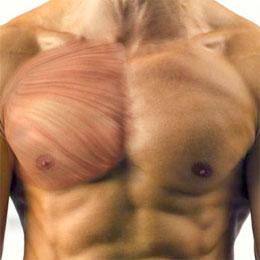 High Incline Shoulder Press Instead Of Overhead Press
High Incline Shoulder Press Instead Of Overhead Press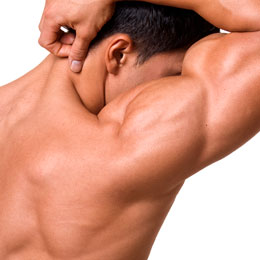 Staggered Between Presses
Staggered Between Presses Narrow The Grip When Pressing Or Dipping
Narrow The Grip When Pressing Or Dipping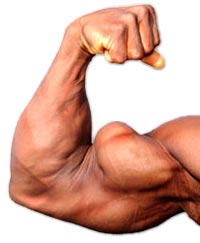 Narrow The Grip When Pulling
Narrow The Grip When Pulling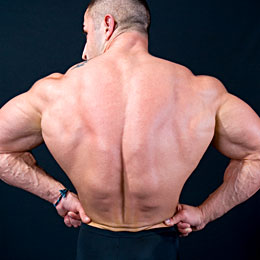 Stand Instead Of Sitting Down
Stand Instead Of Sitting Down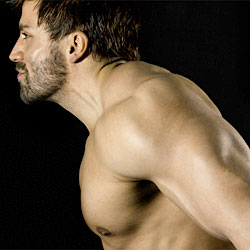 Shrug Before, During, And/Or After Any Upright Exercise
Shrug Before, During, And/Or After Any Upright Exercise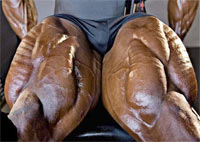 Extend Your Range When Deadlifting By Using A Wide Grip, Or A Platform
Extend Your Range When Deadlifting By Using A Wide Grip, Or A Platform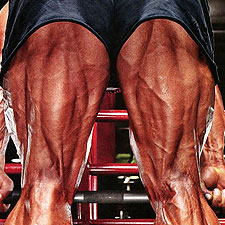 Extend Your Range When Performing Bent-Over Movements
Extend Your Range When Performing Bent-Over Movements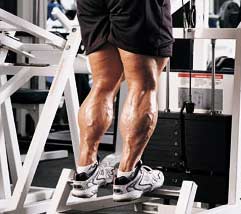 Extend The Ankle When Performing ANY Standing Movement
Extend The Ankle When Performing ANY Standing Movement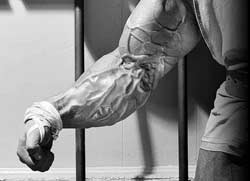 Loosen Your Grip To Strengthen It
Loosen Your Grip To Strengthen It Increase The Time A Muscle Is Under Tension For
Increase The Time A Muscle Is Under Tension For